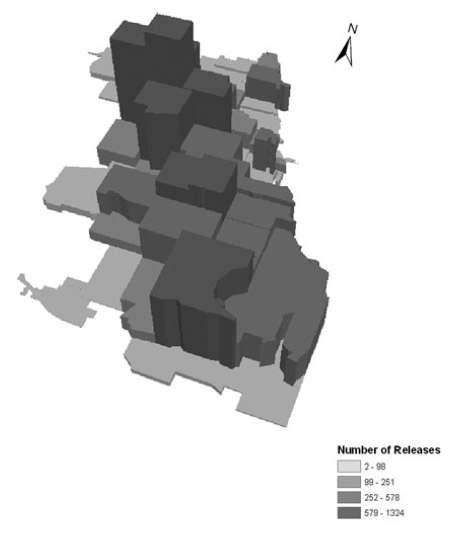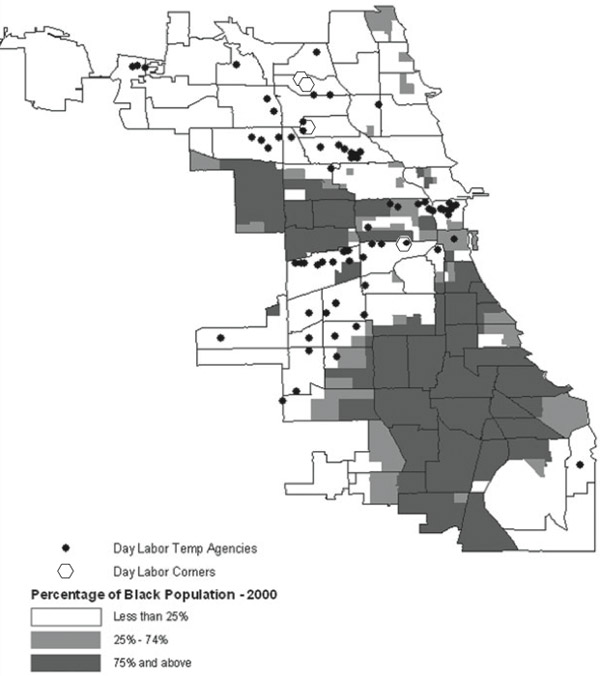
Today the CTA announced that it's expanding its ex-offender apprenticeship program—265 temp jobs at $9.50 an hour with the opportunity for full-time employment. It's a modest increase, but every little bit helps. For a broader look at the problem, I recommend Angela Caputo's new investigative piece for the Chicago Reporter on the city's "million-dollar blocks": the areas of the city where the most residents are incarcerated, and the extraordinary expense of incarcerating those Chicagoans:
The Reporter analyzed all criminal cases originating in Chicago using the Cook County Clerk of the Circuit Court records and found that more than 147,000 prison sentences were handed out from 2000 through 2011. That’s putting the state on tap for an estimated $5.3 billion in incarceration costs. A disproportionate number of these sentences has come from areas like this Austin block, which alone is costing an estimated $4 million. For all of Austin, the cost rises to $644 million. Meanwhile, the neighborhood is starved for jobs and other resources that could keep its residents out of prison.
There are 969 census blocks (each about the size of a city block) that cost over a million dollars. And when those offenders get out of prison, there's not much work to go around, much less for ex-offenders. In 2008, Jaime Peck and Nik Theodore looked into the geography of offender releases and employment in the city (PDF), and the geography lines up with Caputo's extensive research. Here's what it looked like from 2000-2004:

Here's what that translates to across the city:
between 25,000 and 35,000 former inmates reenter the Chicago metropolitan area every year, roughly half of whom return to just a handful of ‘receiving communities’ on the West and South Sides of Chicago (see Figure 2). These flows, while self-evidently overwhelming in scale for those West and South Side communities concerned, are also of substantial magnitude relative to the Chicago labor market as a whole. By way of comparison, the annual number of high-school graduates from the Chicago Public School system is 15,000, while statewide the average annual flow out of the welfare system peaked at around 17,500 several years ago.
And as of 2007, the concentration of temp agencies didn't line up with those receiving communities.

265 jobs is not a lot in that context, but aspects of it are encouraging—above-minimum-wage jobs with union representation. At the very least, it's another attempt at something the city and state have struggled with in recent years.
Photograph: Chicago Tribune



